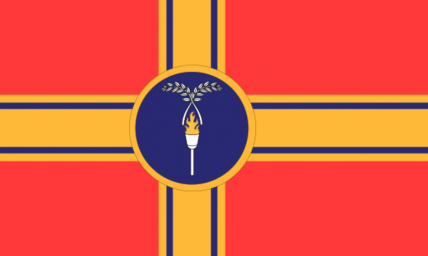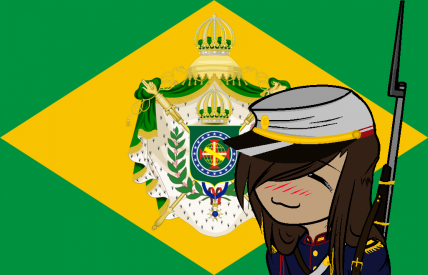
Advertisement

![]() by Toropikaru » Fri Jan 03, 2020 3:46 pm
by Toropikaru » Fri Jan 03, 2020 3:46 pm
KBN News: New museum to open in Misai to commemorate the legacy of the Min dynasty, plans for an exhibitions dedicated to Emperor Yuu Ji Min as well as Shu Hua Min are expected to come in opening day // Kai’Ssiu to be appointed a new governor after the deathof former governor Jin Jo’kashi
Embassy Program ---> https://forum.nationstates.net/viewtopic.php?f=23&t=459272

![]() by Estainia » Sat Jan 04, 2020 10:08 am
by Estainia » Sat Jan 04, 2020 10:08 am

![]() by Ivory Coasts » Sat Jan 04, 2020 12:57 pm
by Ivory Coasts » Sat Jan 04, 2020 12:57 pm

![]() by Greater Cosmicium » Sat Jan 04, 2020 2:35 pm
by Greater Cosmicium » Sat Jan 04, 2020 2:35 pm
Military Hub
Geography Hub
History Hub
Economy Hub
14/01/1072920 | Cosmi-Web News: [SCI] Consumption of artificial fish results in massive gastrointestinal expulsion | Cosmician Press Agency: Planet Toys-R-Us attacked by styrofoam bullet, planet shattered

![]() by New Cassadland » Sun Jan 05, 2020 4:48 am
by New Cassadland » Sun Jan 05, 2020 4:48 am

![]() by The Sapmi » Sun Jan 05, 2020 5:17 am
by The Sapmi » Sun Jan 05, 2020 5:17 am
International News: Growth of world market slowest since 2074 | European Federation announces complete unification to occur within the century | Hispaniola wins the 2088 World Cup, the first Carribean Nation to do so
Local News: Terrorist attack in Finnmark leads 84 dead, week of mourning instituted | Call for vote of no-confidence held off as Bjorn Handal's approval rate surges to 51%
The Rundown: The Saami Commonwealth is a nation located in Northern Scandinavia that declared independence in 2052. Factbooks are factual, most NationStates statistics are not

![]() by Wochaystein » Sun Jan 05, 2020 1:52 pm
by Wochaystein » Sun Jan 05, 2020 1:52 pm

![]() by Lanorth » Sun Jan 05, 2020 2:32 pm
by Lanorth » Sun Jan 05, 2020 2:32 pm

![]() by Yamoi » Wed Jan 08, 2020 3:49 pm
by Yamoi » Wed Jan 08, 2020 3:49 pm

![]() by Vulgaro-Graznavian Commonwealth » Fri Jan 10, 2020 3:46 pm
by Vulgaro-Graznavian Commonwealth » Fri Jan 10, 2020 3:46 pm


![]() by Tellurem » Fri Jan 10, 2020 11:22 pm
by Tellurem » Fri Jan 10, 2020 11:22 pm

![]() by Ard al Islam » Fri Jan 10, 2020 11:26 pm
by Ard al Islam » Fri Jan 10, 2020 11:26 pm

![]() by Kasa Tkoth Sphere » Sat Jan 11, 2020 12:41 am
by Kasa Tkoth Sphere » Sat Jan 11, 2020 12:41 am

![]() by South Caleblan » Sat Jan 11, 2020 8:22 am
by South Caleblan » Sat Jan 11, 2020 8:22 am
Date: July 14, 1943 - December 21, 1944
Location: Frankfurt, Germany
Result: Allied Victory
- French advance in Western Europe halted
Belligerents:
Polish-Lithuanian Union
Germany
Russian Republic
Austria (volunteers)
Union of France and Algeria
Union of Britain
Portugal (aviation)
Strength:
Total Number of Allied Soldiers
1,226,599
(2,570 Austrian "White Brigade")
100 tanks
12,000 artillery pieces
4,679 aircraft
3 river monitor
French Forces
1,156,931
(1,902 Portugese Volunteers and a small detachment of Turkish brigade)
1,647 aircraft
34,000 artillery pieces
120 tanks
British Forces
199,738
(approx. 500 Japanese Forces in the West)
Casualties:
566,790 German troops killed
12,821 injured (approximate number)
456 aircraft destroyed
1 river monitor sunk
390,100 Polish troops killed
90,211 injured
109 aircraft destroyed
108,900 Russian soldiers killed
34,788 injured
103 aircraft destroyed
1,290 Austrian soldier killed
12 artillery pieces destroyed

![]() by Duskuarhiel » Sat Jan 11, 2020 2:06 pm
by Duskuarhiel » Sat Jan 11, 2020 2:06 pm

![]() by Syeadeshistania » Sat Jan 11, 2020 2:16 pm
by Syeadeshistania » Sat Jan 11, 2020 2:16 pm

![]() by Grenost » Wed Jan 15, 2020 11:11 pm
by Grenost » Wed Jan 15, 2020 11:11 pm

![]() by Aeisonia » Thu Jan 16, 2020 12:56 am
by Aeisonia » Thu Jan 16, 2020 12:56 am
The battle was decisive, and over very quickly. Phasmian soldiers that surrendered were shot. It was a glorious day in the Phasmian campaign.
Defence Alert Level [DEFALLEV]
1
[2]
3
4
5
Top National StocksAUS ↓ 0.234%
NRM ↑ 1.34%
AGA ↑ 4.87%
HGG ↑ 3.00%
PAS ↑ 1.23%
Post-societal-collapse authoritarian corporate cyberpunk hell
This nation is a perfect representation of my views.
"Dissent? Crushed. Human Rights? Never existed. Opposing countries? Obliterated. Godmodders? Hung from a streetlamp. Minorites? Forced to the dig their own graves and shot. Your sole purpose in life? Spend money, procreate, and die. Hotel? Trivago." -Neos Realm
Anthem:https://www.youtube.com/watch?v=DRMgRvlphJ4

![]() by The Horde of One » Thu Jan 16, 2020 6:25 am
by The Horde of One » Thu Jan 16, 2020 6:25 am

![]() by Estonland » Thu Jan 16, 2020 7:02 am
by Estonland » Thu Jan 16, 2020 7:02 am

![]() by Peoples National Workers Union » Thu Jan 16, 2020 8:27 am
by Peoples National Workers Union » Thu Jan 16, 2020 8:27 am

![]() by The Union of British North America » Fri Jan 17, 2020 12:56 am
by The Union of British North America » Fri Jan 17, 2020 12:56 am

![]() by Jirena » Sun Jan 19, 2020 10:30 pm
by Jirena » Sun Jan 19, 2020 10:30 pm

![]() by Pax Brasiliana » Tue Jan 21, 2020 6:49 am
by Pax Brasiliana » Tue Jan 21, 2020 6:49 am
Led by a timid Empress and a "tropical Caesar", Pax Brasiliana is a beacon of tradition and aristocratic hope that stands tall in the sea of blood and ruins.
O Pioneiro (March 2024): Headlines - Japanese-Brazilian archeological expedition to the Amazon Rainforest uncovers traces of a "possibly lost" ancient civilization. | Art News - Meet the Neoromantic trend that spawned in Brazil and spread throughout Latin America. | Economy News - "A global recession has already begun", says American specialist following signs of European economic slowdown.

![]() by Haleck » Tue Jan 21, 2020 9:06 am
by Haleck » Tue Jan 21, 2020 9:06 am
Advertisement
Return to Factbooks and National Information
Users browsing this forum: No registered users
Advertisement